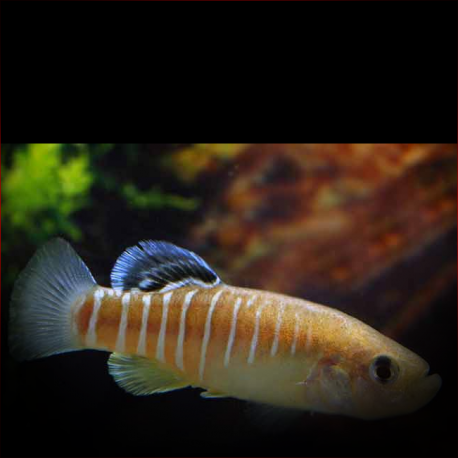More info
Datasheet
| Minimum Tank Size | 60 litres / 15.85 US gallons |
| Maximum Size | 6.0cm / 2.36inches |
| Temperature | 12°C / 53.60°F - 32°C / 89.60°F |
| Hardness | 10.03dgH / 179ppm - 20.00dgH / 357ppm |
| pH | 6.2-8.5 |
General Description
Aphanius vladykovi, a member of the Cyprinodontidae family, is a cyprinodontoid-toothcarp species native to the Zagros mountain range in the Chahārmahāl o Bakhtiyārī province of Iran. With a maximum size of 6.0cm, this species prefers slow-moving freshwater streams, pools, and marshes with substrates of mud and pebbles. While not as striking in coloration as some related species, A. vladykovi is known for its intriguing behavior and continuous activity.
Aquarium Setup
A tank size of at least 60 liters is recommended for Aphanius vladykovi, with water conditions of pH 6.2-8.5, hardness of 179-357ppm, and a temperature range of 12-32°C. The species, tolerant of slightly acidic conditions, requires a winter period with lower temperatures for optimal health. The setup should include hiding spots, suitable medium for egg deposition, and spaces for dominant males, females, and subdominant males to avoid aggressive interactions during the spawning season.
Behaviour
Aphanius vladykovi displays vigorous spawning behavior, making it unsuitable for community aquariums. Maintaining the species alone is recommended due to its rarity in the hobby. In a group setting, a ratio of two or three females to each male is ideal. Despite being relatively peaceful towards one another compared to some congeners, the males establish temporary territories and exhibit enhanced coloration during mating.
Feeding and Diet
Aphanius vladykovi are micropredators, feeding on small aquatic crustaceans, worms, insect larvae, zooplankton, and occasionally plant material. In captivity, they can be fed dried foods along with live or frozen options like Artemia, Daphnia, or bloodworms. Ensuring a varied diet is crucial, particularly during the high reproductive period from spring to summer, and introducing algae-based products is beneficial.
Reproduction & Dimorphism
Captive breeding of A. vladykovi is relatively straightforward with proper tank conditions. The species is a fractional spawner, with females laying eggs continuously between March and June. Males create territories to court females, with dominant individuals displaying intense coloration. Sexual dimorphism is evident, with males showcasing blue vertical bars and darker fins, while females are larger with fewer markings and colorless finnage.
Habitat and Distribution
Known for its restricted distribution within the Zagros mountain range in Iran, Aphanius vladykovi inhabits freshwater bodies over 2000m above sea level. It prefers habitats with muddy substrates, pebbles, and aquatic plants like Myriophyllum and Potamogeton. Although facing extinction threats due to human activities and habitat degradation, conserving the species' natural environment is crucial for its survival.

